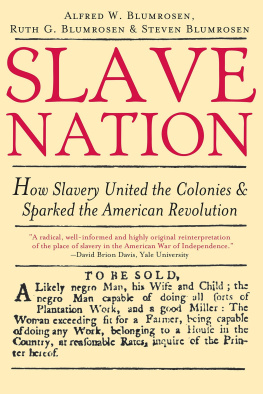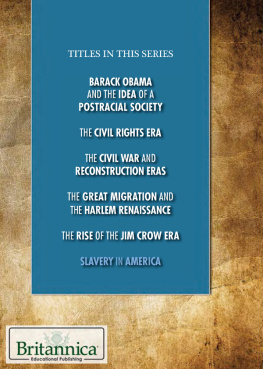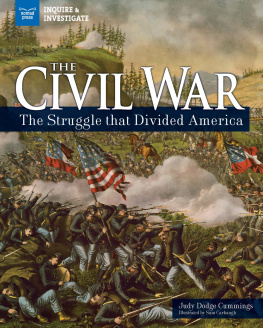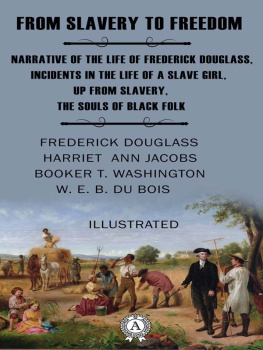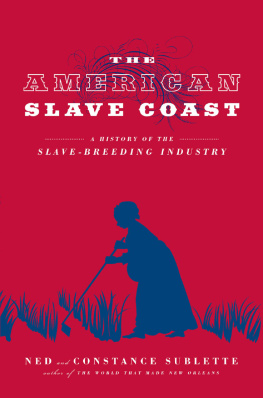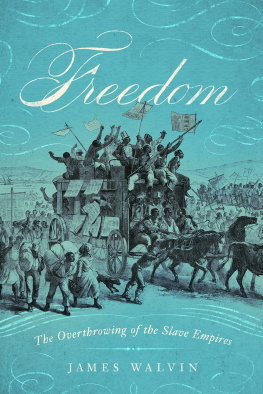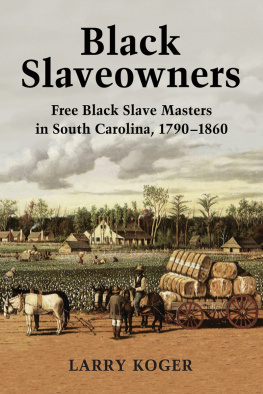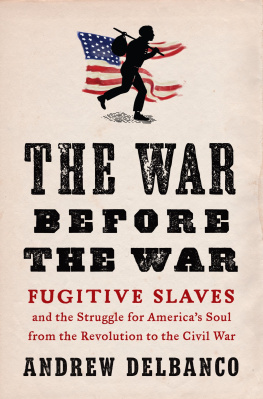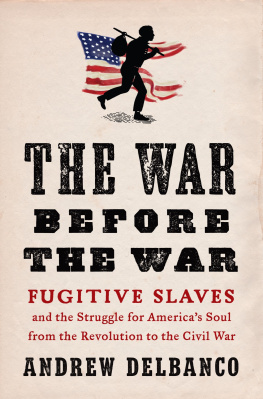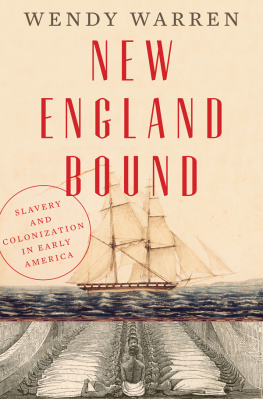SLAVE NATION
How Slavery United the Colonies & Sparked the American Revolution
Alfred W. Blumrosen and Ruth G. Blumrosen
Introduction by Eleanor Holmes Norton

Copyright 2005 by Alfred W. Blumrosen
Cover and internal design 2005 by Sourcebooks, Inc. Cover image Corbis Images
Sourcebooks and the colophon are registered trademarks of Sourcebooks, Inc.
All rights reserved. No part of this book may be reproduced in any form or by any electronic or mechanical means including information storage and retrieval systemsexcept in the case of brief quotations embodied in critical articles or reviewswithout permission in writing from its publisher, Sourcebooks, Inc.
Published by Sourcebooks, Inc.
P.O. Box 4410, Naperville, Illinois 60567-4410 (630) 961-3900
FAX: (630) 961-2168
www.sourcebooks.com
Library of Congress Cataloging-in-Publication Data Blumrosen, Alfred W.
Slave nation : how slavery united the colonies and sparked the American Revolution / Alfred W. Blumrosen and Ruth G. Blumrosen.
p. cm.
Includes bibliographical references and index.
1. Slavery--United States--History--18th century. 2. United States--History--Revolution, 1775-1783--Causes. 3. African Americans--History--To 1863. I. Blumrosen, Ruth G. II. Title.
E446.B58 2005
973.311--dc22
2004027271
Printed and bound in the United States of America
QW 10 9 8 7 6 5 4 3 2 1
To Ruth
For our lives together
To Erica, Charlotte, and Victoria
Our granddaughters
For their lives in a better world
TABLE OF CONTENTS
Acknowledgment
We must first acknowledge the two universitiesthe University of Michigan and Rutgers University Law Schoolthat have been our base for most of our lives. At Michigan we met and married; learned journalism at the Michigan Daily; and studied history, economics, political science, and, of course, law. One of our near classmates, Ted St. Antoine, long-time dean of the Michigan Law School, encouraged our book project at a time when we needed support.
We continued to study and learn from the Rutgers law faculty when we came to the law school in 1955. Most memorable were Tom Cowan, Gerry Moran, Bob Knowlton, and Clyde Ferguson. A succession of deans supported our activities in labor relations, civil rights, and employment discrimination law: Lehan Tunks, Willard Heckel, Jim Paul, Peter Simmons, Roger Abrams, and now Stuart Detsch. We inflicted our evolving ideas about slavery and the Revolution on those faculty members who would listen, particularly Greg Marks and Mark Weiner.
Our second acknowledgment is to the work of generations of historians, many of whom we rely on in this book. Although we criticize those who believe that slavery played no role in the beginning of the Revolutionary era, we recognize that we are standing on their collective shoulders in order to reach our conclusions to the contrary. Particularly, we have built on Staughton Lynds Class Conflict, Slavery, and the United States. Lynds underlying principlethat slavery was an important element in the beginning of our national existenceresonated with our own thinking about that topic. Lynd did not get it all right, but he first saw that slavery had to be more central in the analysis of our Revolution than the conventional wisdom recognized. We built upon his essay, The Compromise of 1787, to better understand the relation between the Constitution and the Northwest Ordinance. Since Lynd wrote, nearly forty years ago, others, including John Hope Franklin, Paul Finkelman, Gary Nash, Don Fehrenbacher, Duncan McLeod, and Don Robinson, have examined the role of slavery in our history. They rarely focused on the summer of 1772, when an English judge denounced slavery as so odious that a master could not recapture a slave in England. Nor did they make the connection between the Continental Congress and the deadlock at the Constitutional Convention in 1787.
Third, we have a debt of gratitude to the repositories of information that were unfailingly helpful: the law libraries at Rutgers, Newark; Columbia University; Fordham University; the Butler Library at Columbia; the New York Historical Society; the British Museum; the British Anti Slavery Society in London; the library of Colonial Williamsburg, Virginia; and the Library of Congress.
Fourth, we have received support over the years that expanded our understanding of the breadth of legal culture, commencing in 1957 with a grant from the Russell Sage Foundation to examine the relationship between law and sociology. In 1993 we had Fulbright Scholarships to South Africa to examine whether the U. S. experience with equal employment opportunity would be useful there as South Africans embarked on the peaceful dismantling of apartheid. This was followed by a months residency at the Rockefeller Study Center in Bellagio, Italy. Beginning in 1998, the Ford Foundation enabled our statistical study of intentional job discrimination that is relevant to the closing chapter of this book. All of these institutionsmeaning the people in themhave helped us to understand the problems we have addressed in this book.
During the civil rights era, it was often said that if we could go to the moon, we could surely end discrimination at home. These last forty years have demolished that prediction. Going to the moon involved an environment of known or knowable forces; discrimination involves complexities of human behavior that defy the certainties of natural science.
We learned much about these complexities working with those involved in civil rights activities. We were privileged to know workers who were male and female, black, white, Hispanic, and Asian Pacific, as well as employers, unions, and civil rights organizations. We saw government, both as participants in its activities and as litigants against it. Eleanor Holmes Norton, with whom we worked during her years as chair of the New York Commission on Human Rights and the Federal Equal Employment Opportunity Commission, has always been a tower of strength, critical judgment, and warm friendship.
Most of all, we admired those men and women of the 1960s who had faith that a government that had ignored them for so long would help bring justice into the realities of their workplaces. They came to the then-new Equal Employment Opportunity Commission at great personal risk, in the hopes of influencing those workplace realities they had long endured. The example of their courage has sustained us through difficult times.
To our agent, Ron Goldfarb, who had confidence in the book, and to our editor Hillel LeGree Black, his assistant Sarah Tucker, and our distant editor Michelle Schoob, we are indebted for critical and supportive commentary, and the publication of this book.
Our sons, Steven and Alex, read, reviewed, criticized, and encouraged multiple versions of the book as they evolved through the years, along with lots of conversation and not a little argument. They have been patient and helpful at every turn. Alex usually gave advice, counsel, and criticism from Paris where he practices law. Steven has been more closely involved in recent years, in editing, advising, revising, and researching text and images; in solving computer problems; and in countless other ways supporting our efforts. His daughter Erica alphabetized our growing library and helped with the bibliography and footnotes. Frederica Wechsler fine-tuned the final version of our text.
Introduction
This fascinating and readable book about the conundrum of black slavery and the birth of a free nation is an exacting history by two remarkable scholars who have distinguished themselves as lawyers and intellectuals. Although the Blumrosens are not professional historians, the history of slavery and discrimination has had an important place in their personal and professional lives. Living with the consequences of this history in our country fueled their lifelong dedication to racial justice and their work as civil rights lawyers. Their strong professional bonds nurtured their remarkable, loving marriage as well. They worked together as lawyers, scholars, and professors, sometimes on the same subjects, but often not. Theirs was a lifelong partnership of parallel interests, professions, scholarship, and now this final collaboration.

